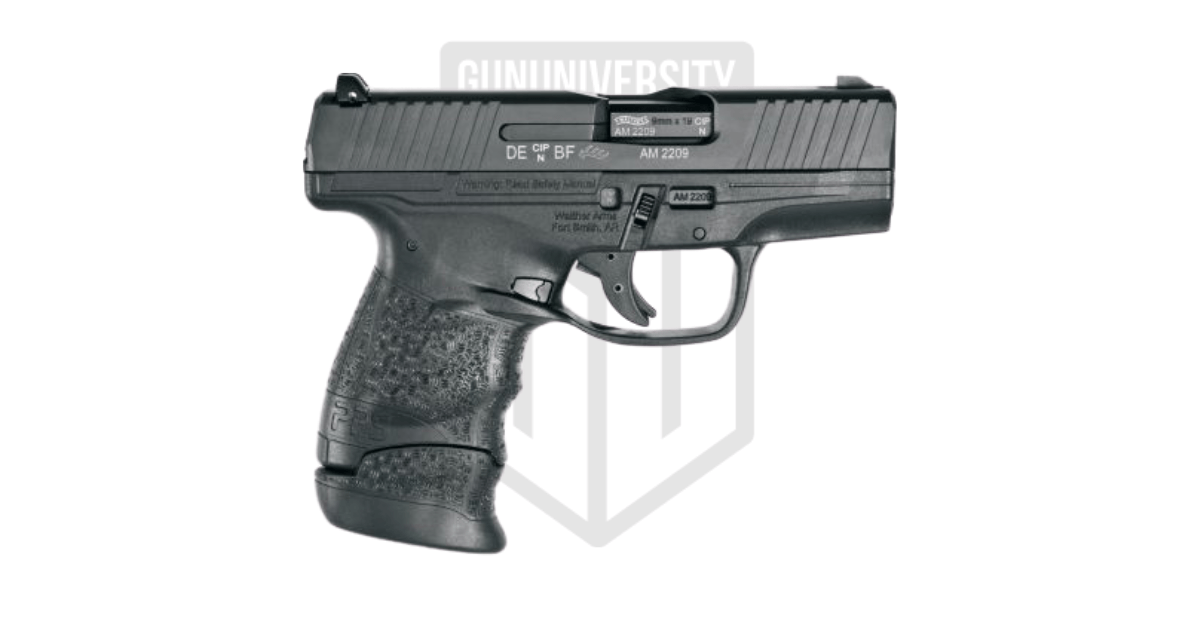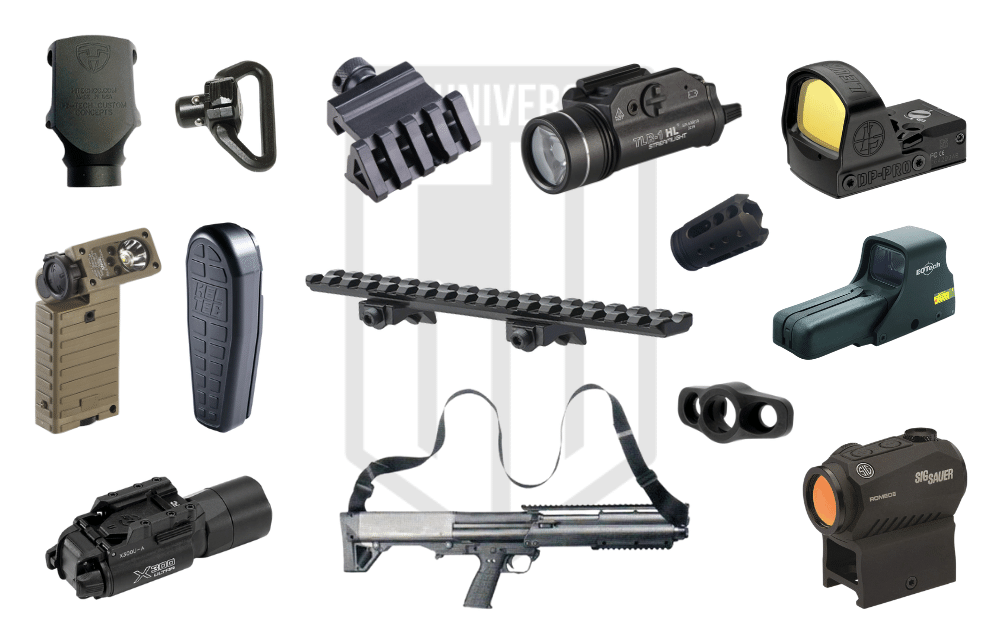How to Fill Out a FFL Log Book
FFLs (Federal Firearm Licensees), whether they are gun dealers, firearm manufacturers, or any of the other types of FFLs, all have one major requirement from the ATF in common: they must have a complete and accurate Acquisition and Disposition Book.
This Acquisition and Disposition Book, sometimes referred to as a “bound book,” A&D book,” or simply, an “FFL Log Book,” is the heart of an FFLs records and crucial for ATF compliance.
In my years of experience as an attorney that represents FFLs against the ATF, I’ve seen most violations during ATF inspections from problems with the ATF Form 4473 (customer transaction form), however, it is not uncommon to have errors in the FFL Log Book and when they do, they can be very serious.
Most of the issues I see with the A&D log book is that it is not filled out properly – so, I’m taking some of the pointers I’ve used over the years in my experience with clients to share with you how to properly fill out an ffl log book.
If you’re still wondering which FFL log book is best for your A&D records, check out our Best Bound Books for FFLs guide.
FFL Log Book Format
The easiest way to look at how to fill out an ffl log book is to follow the A&D book format. This format is proscribed by the ATF, and therefore, is required.
The A&D Book has two major sections: the acquisition section and the disposition section.
In my experience helping many clients over the years with this, I find it best to picture the old way of keeping an A&D record, in an actual paper bound book.
The left side of the open book was the acquisition information – the details about the firearm including where it came from.
The right side of the book, following along the same line from the left side, is the disposition information for that same firearm. The disposition information includes when and where the firearm went.
If there is acquisition information for a particular firearm but no corresponding disposition information, then I call this an “open disposition” and it means that the firearm must still be in your inventory.
Each section has specific columns that contain specific information. Those columns are:
- Manufacturer, Importer (if any), or “Privately Made Firearm” (PMF)
- Model
- Serial Number
- Type
- Caliber or Gauge
- Date of Acquisition
- Name and Address of Non-Licensee; or if licensee, Name and License No.
- Date of Disposition
- Name to Whom the Firearm was Disposed
- Address of Non-Licensee; License No. of Licensee, or 4473 Transaction Number is such forms filed numerically
Here’s a sample of what the A&D book should look like:
| Manufacturer, Importer (if any), or "Privately Made Firearm" (PMF) | Model | Serial Number | Type | Caliber or Gauge | Date | Name and Address of Non-Licensee; or if licensee, Name and License No. | Date | Name | Address of Non-Licensee; License No. of Licensee, or 4473 Transaction Number is such forms filed numerically |
|---|---|---|---|---|---|---|---|---|---|
| Glock / Glock, Inc. | 19 | GLK1234 | Pistol | 9x19 | 4/19/2023 | Lipsey's LLC 5-72-033-01-3A-09424 | 4/21/2023 | Joe Smith | 123 Anystreet Dr. Phoenix, AZ 85023 |
| Remington | 870 | REM1234 | Shotgun | 12 Ga. | 4/20/2023 | Remington Arms Company 1-64-033-07-9G-04549 | |||
| Smith & Wesson | 10 | SAW1234 | Revolver | 38 Sec | 4/21/2023 | Smith and Wesson, Inc. 6-04-013-07-2E-14143 | 4/25/2023 | Smith and Wesson, Inc. | 6-04-013-07-2E-14143 |
| Springfield Armory / HS Produkt | XD | SA1234 | Pistol | 9mm | 4/24/2023 | RSR Group Inc 5-75-439-01-0D-26128 | 4/29/2023 | Jim Johnson | 5678 Main St. Franklin, TN 06473 |
Filling out the FFL Log Book (A&D Book)
We’re going to go through each column of the FFL log book as if you were an FFL Dealer as an example.
Manufacturer FFLs fill out the log book in a similar fashion, however, the firearms they make will be acquired from themselves.
Receiving a Firearm
Let’s assume that you’re a firearm dealer (typically a Type 01 FFL) and you just received a firearm from one of your distributors.
You received a Glock 19 Gen 3 made in Austria with the serial number 123456 from Lipsey’s on May 1, 2023. The first thing you’re going to do is fill in the firearm information.
Manufacturer, Importer (If Any), Or “Privately Made Firearm” (PMF)
In this section you’re going to fill in the manufacturer (make) of the firearm and importer if one exists.
In our example, we are receiving a Glock pistol that was made in Austria – this means that there will be an importer.
Taking the marking information off of the firearm only (and not from the box or shipping documents) is an important part of proper record keeping. If law enforcement finds this firearm at a crime scene, it is unlikely that this extra information will be present and they will be taking the information from the markings on the firearm to conduct their trace request through the ATF.
In this example, you will enter “Glock / Glock, Inc.” as the firearm was made by Glock (in Austria) but imported by Glock, Inc. in the United States.
Model
For model, you will include only “19” and NOT “G19”. This is a common error that I see in my personal experience as a firearms attorney helping FFLs.
G19 is what Glock lists on the box and 19 is what is listed on the gun. Therefore, we use 19 because that’s what’s required as part of ATF compliance.
For later generations of Glocks, “19 Gen 4” or “19 Gen 5” is what is listed on the gun (this distinction was made because the Gen 4 and Gen 5 are not legal in California.
Serial Number
In this section, you will list the serial number on the firearm “123456” This is an important time to check that it matches what’s on the box and paperwork.
Even though you don’t use what’s on the box or paperwork, you might be able to catch a mistake of the wrong gun in the box which means the distributor may have accidentally disposed the wrong gun to you.
Type
For the firearm type, you can only use the types of firearms specified by the ATF.
The basic (most common) types include:
- Rifle
- Pistol
- Revolver
- Shotgun
- Frame
- Receiver
But, in cases that involve firearms regulated by the National Firearms Act, they also include:
- Silencer
- Short Barreled Rifle
- Short Barreled Shotgun
- Any Other Weapon (AOW)
- Machine Gun
In this case, you’ll use “pistol”
Caliber Or Gauge
Like every other piece of information, you must use what’s on the gun – so, it is very likely you’ll have an FFL log book with multiple different versions of 9mm. Some companies will mark 9×19, 9x19mm, 9mm, 9mm Luger, 9mm Parabellum, or 9mm NATO.
In this case, the Glock should be marked on the barrel with 9×19 so that’s what you’ll use here.
Date Of Acquisition
For this column we’re going to use “May 1, 2023” as that’s the date we received the firearm from the distributor at our licensed location.
Name And Address Of Non-Licensee; Or If Licensee, Name And License No.
Since we received the Glock from a licensee (an entity that has an FFL), we are going to include the licensee’s name and FFL number.
Take this information from the copy of the FFL you get from Lipsey’s. It will include their full business name and FFL number.
Selling or Transferring a Firearm
As long as the Glock stays in our inventory, there is nothing else to enter.
However, once you sell the firearm, or dispose it by transferring it to another FFL, you will need to fill out the disposition information.
For our example, let’s pretend that you sold the Glock pistol from above to John A. Smith on November 10, 2023.
Date of Disposition
For this example, we include the actual date that we transferred the firearm to the customer after they filled out the ATF Form 4473 and satisfied the background check requirements: November 10, 2023.
Name (Of Recipient)
The name of the recipient is the customer so we’ll use “John Archibald Smith”
Address Of Non-Licensee; License No. Of Licensee, Or 4473 Transaction Number Is Such Forms Filed Numerically
If we were transferring to another FFL, we’d use their FFL number but since this is a customer without an FFL, we either need to use their full address or 4473 transaction number.
The 4473 transaction number is a number that you as the dealer make up as a way to keep your 4473s filed in order. I do not recommend using these.
Sure, they may make it easy to fill out this section of the A&D record because you can use something like 111023-08 (as the 8th gun you transferred this day) but I have seen too many examples of dealers messing this up.
First, it’s easy to lose track of the number for the day especially when you have multiple employees. But, more important, if you use a 4473 transaction number, you MUST keep the 4473s in this order or you can get a violation during an inspection (I’ve seen this more than once).
I prefer to use the address instead. This may take a little longer if you’re keeping a paper log book and filling it out by hand, but if you’re using an electronic bound book (you should), then there is no time savings.
You still have to keep your 4473s in order with this method but only by their date. So, if you have the 8th 4473 for the day in front of the 4th form for the day, there is no violation as they were all on the same day.
Beware of FFL Log Book Errors
If you find an error in your books, you can correct it by using the correct information and noting the person who made the correction and the date it was made.
However, most don’t know they made a mistake until its too late and the ATF is there to check your books.
Most errors are simple things, or innocent mistakes. However, even though you didn’t mean to, it doesn’t cut it with the ATF. You can lose your FFL or worse.
It’s because of this that we highly recommend that FFLs take a structured course to help learn all about ATF Compliance. Luckily there is such a course – the ATF Compliance membership.
In this membership, you not only get access to the a series of courses important to running your FFL legally and efficiently, but you also get access to a monthly group Ask Me Anything zoom call with a professional in the field, as well as get notified when the ATF changes their minds about something or the law changes.
That last one is a lifesaver, because as you’ve probably seen, these things can change and most of the time FFL’s don’t know what to do.d Luckily members get notified and a detailed plan on what they need to do to stay compliant.
So, if you haven’t, be sure to check that out and protect your FFL.
Recent Posts
December 15, 2025
December 15, 2025
December 12, 2025
December 12, 2025





